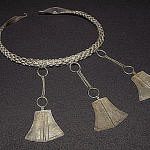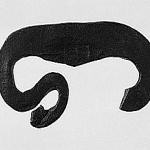

Home
Area
Vätsäri
Övre Pasvik
Pasvik Zapovednik
Nature
Geology
Climate
Water system
Flora
Fauna
Culture
Population
Religion
Sources of livelihood
Old ways of life
Time of industrialism
History
Stone Age
Early Metal Age
Late Metal Age
Middle Ages
Towards modern times
Timeline
Cooperation
Nature monitoring
Nature tourism
Publications
Contacts
Visit Pasvik-Inari
Guidelines
Regulations
News
Links
The Late Metal Age
From the Middle Metal Age to the Sámi Iron Age (AD 300 - 1300)
The Middle Metal Age (AD 300 - 700) in the north is characterised by few finds - iron weapons and iron spearheads and axes obtained by exchange trade from abroad. There were not anymore such original types of artefacts, such as pottery types, on the basis of which the settlement places could be easily dated. But the situation changed around AD 700 - 800 onwards, when luxurious jewellery and tools could be found in the northern settlement sites and separate finds. Behind this economic boom was the exchange trade of fur and silver objects. Need of fur in Western Europe and in the East established vivid, long-distance trade contacts with northern societies.
For archaeologists it is very difficult to determine the ethnicity of prehistoric cultures based on archaeological material alone. There is no doubt that people who lived in the north during prehistoric times are the forefathers of the present Sámi population of the area. On the other hand, it is very hard to determine when the prehistoric culture became the pre-Sámi or to Sámi culture as it can be understood today.
The first evidence or reliable reflection of early Sámi culture can be seen by the emergence of a new settlement type in the north around AD 700. These settlements can be distinguished in the field from low, rectangular piles of stones which compose the fire-place. Usually there are not any visible signs of other structures around the hearth, meaning that people have probably lived in light, movable huts. Northern culture can be seen also in the early medieval references. The most important of them are the story of Norwegian peasant Ottar (890), Historia Norwegiae (1200) and Egil's saga (1200) in which the finns or skrithfinns have been described. During these times also the name lapp or lappi appears in the Swedish, Finnish and Russian references at the same time. On this basis the name might have meant Sámi people of the eastern Fennoscandia.


